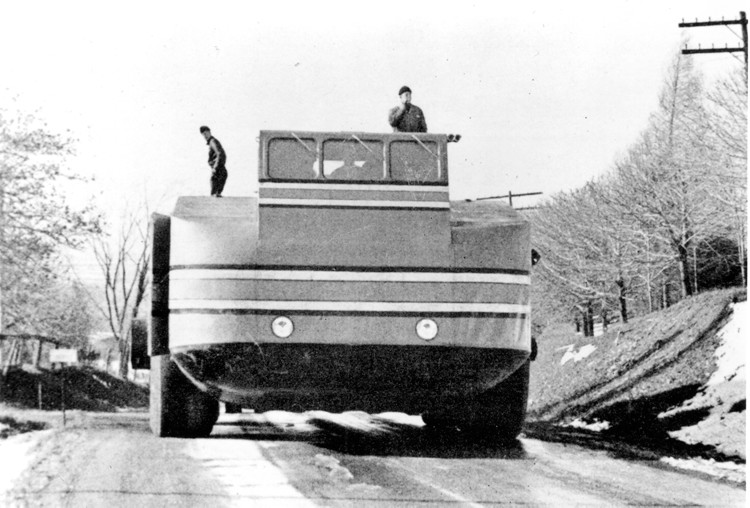
Illinois Tech is connected to some of the world’s greatest inventions. The cell phone. Bar code technology. Magnetic recording. You’ve probably heard of them.
What about the Snow Cruiser?
Invented at Armour Institute of Technology’s Research Foundation, the research branch of Illinois Tech’s predecessor Armour Institute, in 1939, the Snow Cruiser was poised to chart a new course in Antarctic exploration. The 55-foot-long mobile laboratory on wheels was designed to house Admiral Richard E. Byrd and his team on his third expedition to the continent and was offered in response to Byrd’s 1934 second expedition in which he nearly died from carbon monoxide poisoning and poor health. Developed by Thomas Poulter, an Armour researcher and explorer whom Byrd credited with rescuing him in 1934, the vehicle also featured a dark room, machine shop, kitchen, and lab, and carried a Beechcraft biplane, which was to be used for aerial expeditions.
The mechanics of the Snow Cruiser were considered innovative at the time. It boasted four 10-foot-tall Goodyear retractable tires, backup battery storage, a diesel-electric powertrain, and a heating system using engine coolant that circulated throughout the cabin. The $150,000 vehicle ($2.5 million today, factoring inflation) benefited from corporate backers and was constructed at the Pullman Company south of Chicago.
Popular Science touted the Snow Cruiser “as fantastic as a product of Jules Verne’s brain,” and the vehicle drew top national media coverage and crowds of thousands of onlookers as it made its way from Chicago to board the ship North Star in Boston for delivery to Antarctica.
Unfortunately, the Snow Cruiser was a dud. Even before it arrived at its destination it experienced a number of issues—from getting stuck under a Chicago underpass to hitting a bridge and then driving into a creek in Ohio. Upon docking at the snowy continent in 1940, one of its wheels broke through a wooden ramp as it was being unloaded from the carrying ship. Once on land the Snow Cruiser traveled one mile before sinking into the snow, its tires failing to provide sufficient traction.
Although Byrd reported that his expedition discovered “900 miles of unknown coastline that explorers had been seeking for a hundred years,” the Snow Cruiser remained mostly stationary and was abandoned in 1940. After a 1958 rediscovery mission it was officially lost in the snow.
In fall 2015—the 75th anniversary of the Snow Cruiser’s arrival in Antarctica—Illinois Tech students in the Interprofessional Project (IPRO) Program embarked on a journey of their own: to revisit the Snow Cruiser. In their course, The Snow Cruiser Challenge: Inspired, the students are currently assessing the vehicle’s shortcomings and rethinking the Snow Cruiser considering modern needs and developments, all within the parameters of business innovation.